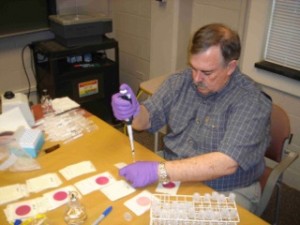(OS1) Programs Earn ISO 9001 and ISO 14001
 Due to its advancements in quality assurance and sustainability standards, ManageMen (OS1) and two of its flagship programs earned ISO 9001 certification for Quality Management Systems and ISO 14001 certification for Environmental Management Systems. The Boeing Company certified ManageMen’s (OS1) program ISO 9001. This was the first time a cleaning process was certified as a component of the aerospace manufacturing process. Sandia National Labs div. Lockheed Martin achieved ISO 14001 certification for their (OS1) cleaning program in Albuquerque, NM.
Due to its advancements in quality assurance and sustainability standards, ManageMen (OS1) and two of its flagship programs earned ISO 9001 certification for Quality Management Systems and ISO 14001 certification for Environmental Management Systems. The Boeing Company certified ManageMen’s (OS1) program ISO 9001. This was the first time a cleaning process was certified as a component of the aerospace manufacturing process. Sandia National Labs div. Lockheed Martin achieved ISO 14001 certification for their (OS1) cleaning program in Albuquerque, NM.
With these certifications, (OS1) programs at Boeing facilities and Sandia National Labs have become the first U.S. In-house cleaning organizations to certify their entire system—more than 1,000 facilities in several states—achieving one of the largest ever volume certifications of commercial buildings. “ManageMen has built both quality and sustainability into our overall (OS1) performance standards and operational procedures,” said Renae Walker, CEO of ManageMen, Inc. “While our commitment has continuously been recognized by our users, team members and business owners, obtaining ISO 9001 and 14001 certifications in two separate companies further validates that commitment and recognizes the company’s drive to meet globally recognized standards.”
ISO 9001 and ISO 14001 are international standards that provide a set of standardized requirements for quality and environmental management systems, respectively. Companies gain certification by implementing policies, procedures and systems that follow and meet ISO standards, which are assessed by a third-party certification body. As part of the ManageMen engineered quality process, (OS1) inspectors annually perform a series of audits and will continue ongoing assessments to monitor compliance.
Since its founding, ManageMen has made quality assurance and customer service core to its engineered cleaning system, both of which are key differentiators for the company’s performance advantage. In addition to third party certifications, the company implements a wide range of quality control tracking programs to maintain the integrity of its process and to ensure an appropriately consistent experience across all (OS1) programs in the U.S.
As a partner and service provider to numerous global companies, ManageMen will now be able to provide these stakeholders with the assurance that it has the systems in place to ensure their properties are meeting the high level of standards that only an ISO 9001 and ISO 14001 certification can provide.
About ISO
ISO is the world’s largest developer and publisher of international standards. ISO is a network of the national standards institutes of some 163 countries. More than 100 of ISO’s members are from developing countries. ISO has more than 18 600 International Standards in its currents portfolio and ISO’s work program ranges from standards for traditional activities, such as agriculture and construction, through mechanical engineering, manufacturing and distribution, to transport, medical devices, the environment, safety, information and communication technologies, and to standards for good practices and for services.

